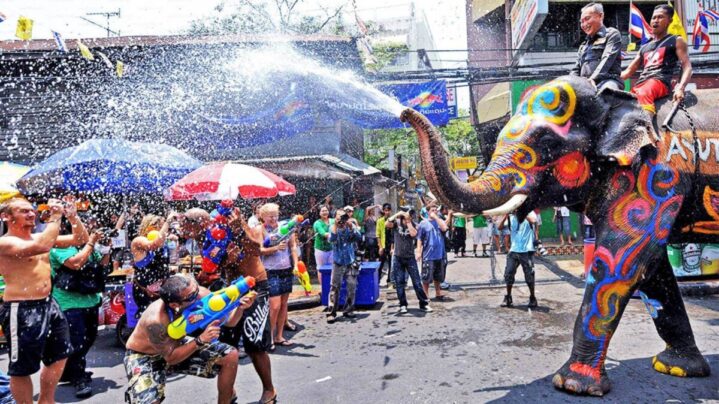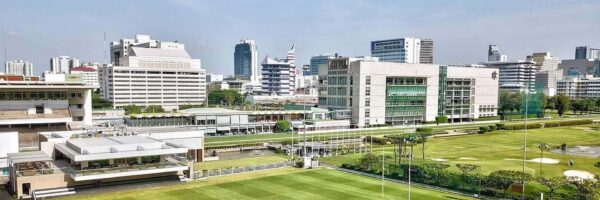
The happiest (and wettest) time of the year in Thailand: Songkran
The worst thing any Thai can say about anything is that it’s “boring.” Happily for everyone, except a few clueless “farang” businessmen who never get the word about what to do (or wear) during the old Thai new year’s day celebration (and are always perfect targets for merry-makers being in a suit and tie), Songkran (Thai: เทศกาลสงกรานต์), also called the “Water Festival” is guaranteed fun. It marks the start of the new year on the solar or astronomical calendar and the astrological calendar.
Thailand’s old new year’s day is now celebrated on 13 April. It has become one of the most important national holidays. The holiday period usually extends for three days or even longer, depending if new year’s day falls on a weekend and if the Thai government approves the extension. The word “Songkran” is derived from the Sanskrit word “Sankranti”, an Ancient Hindu new year’s festival. It literally means astrological passage. It can also mean movement, transformation or change. It refers to the ascent of Aries from Pisces on the astrological chart or the start of the astrological new year. But astronomically, it coincides with the passage of the sun directly overheard in SE Asia or as it appears in the highest position in the sky on the earth’s transit around the sun.
The traditional western new year is now celebrated on 1st January in Thailand. But Songkran was celebrated as the official new year until 1888 when the new year’s day celebration was moved back to 1st April. In 1940, this date was finally shifted to the traditional western new year’s day celebration on 1st January in line with the modernisation programme in the country. Songkran then became a national holiday. Some researchers say technically the name should be “Maha Songkran” of “Great Songkran”. Each monthly passage of the zodiac marks the change from one astronomical month or sign to another. These passages are also referred to as a “Songkran”.
Normally here in Thailand Songkran lasts for three days. Astrologically, the first day of the celebration, 13 April, is called “Maha Songkran” or Great Songkran, the last day of the old year. The second day of the celebration, 14 April, is called “Wan Nao which is the transition day between the old and new year. The third day of the celebration, 15 April, is called “Wan Thaloeng Sok” which is the first day of the new year or the start of the new astrological era.
Since the actual solar year lasts about 365 1/4 days, Songkran has not always fallen on 13 April. There have been adjustments to the New Years Day over the centuries by periodically adding a day to the year to keep the astronomical and astrological years in alignment. For example, in the year 1600 Songkran was celebrated starting on 7th April. By the year 1900, the new year’s day celebration had been moved back to 12th April. In 1989, the Thai cabinet set Songkran as 12-14th April, in spite of the correct starting new year’s date of 13th April. In the west, this extra accumulation of time is added as one extra day every four years on 29th February in the years that are divided by four (i.e.; 2016, 2020, 2024, etc.) and another day for years that are divided by 400 on 30 February (i.e., 1600, 2000, etc.).
The Songkran festival is rich in symbolic traditions and meanings. In the morning there is merit making with offerings of food and other needed items to Buddhist monks and local temples, the most common way to start the celebration. In an old tradition that is still widely practiced, pouring water on Buddhist statues and on the hands of the monks. Also pouring water on the young and elderly is also a way of showing respect. This action symbolises the washing away of one’s sins and bad luck plus the purification. This festival is also a time when people who have moved away from their traditional villages return home to spend time with their family and friends. Paying reverence to ancestors is also an important part of the festival.
For better or worse, the time honoured traditions of sprinkling water on hands or shoulders has morphed into copious water throwing, especially by raucous teenagers, by the bucketloads on anyone lucky (or unlucky) enough to pass by. Few targets are spared, but overall Songkran means fun, and an enjoyable time for all.



